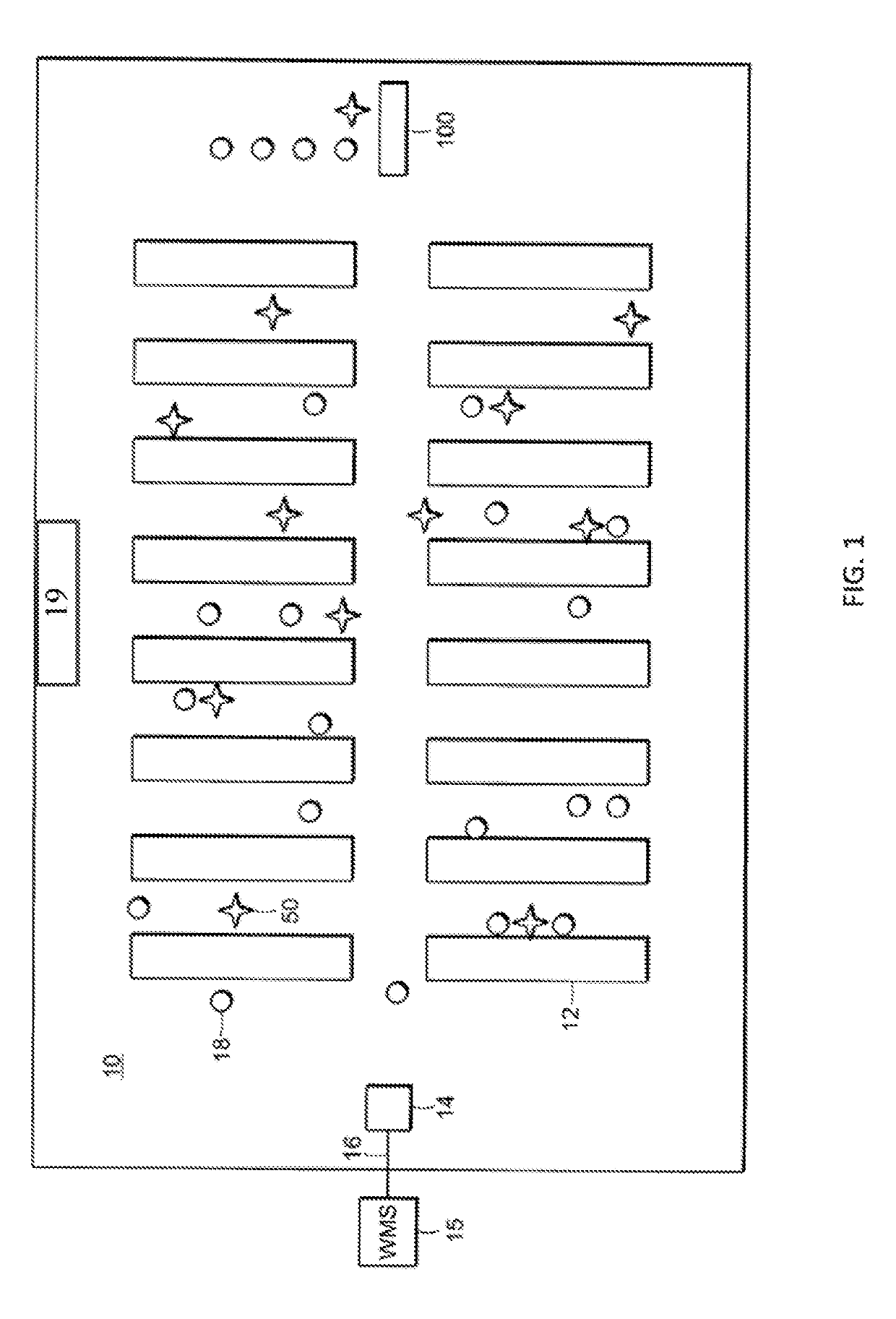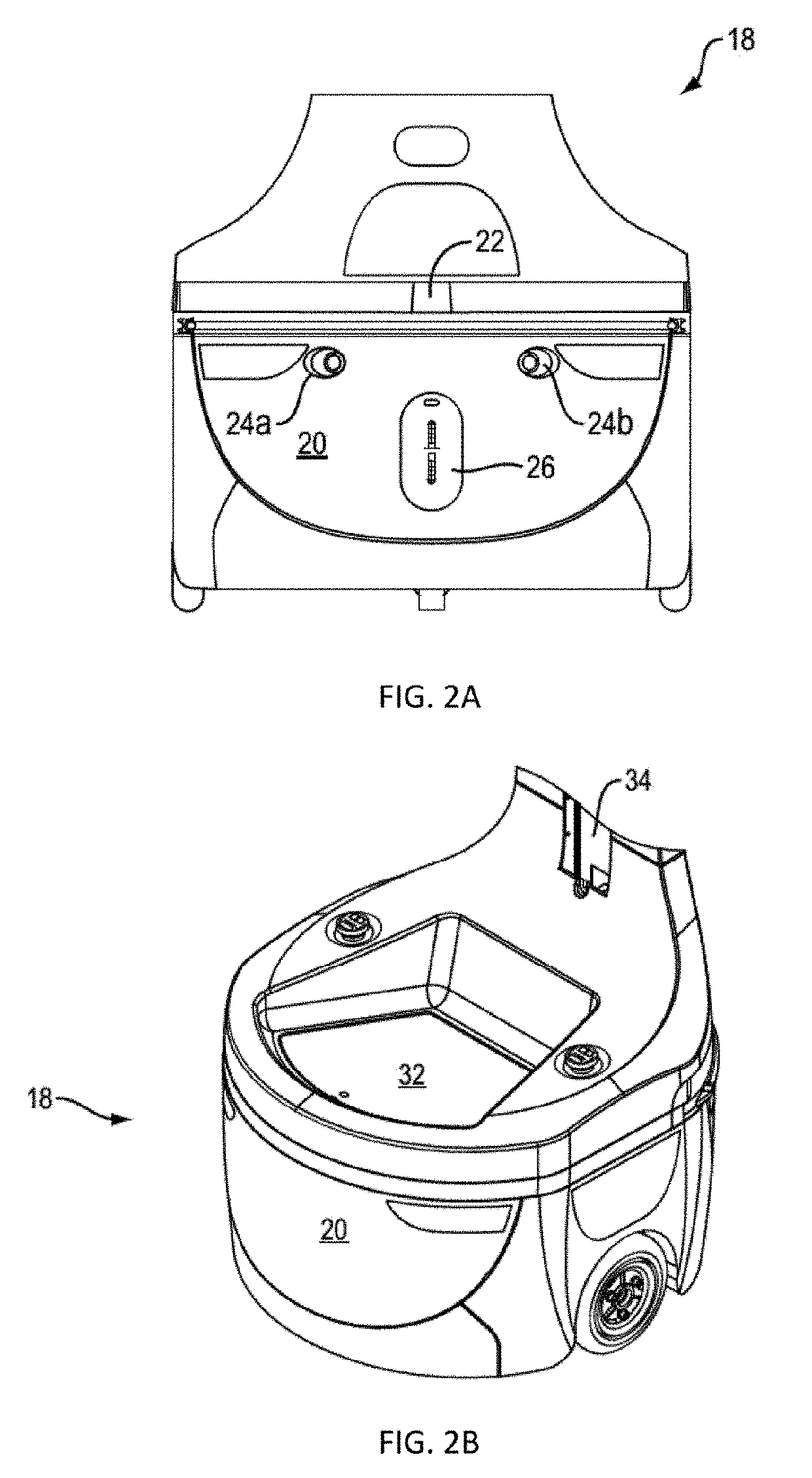Multi-resolution scan matching with exclusion zones
a scanning and exclusion zone technology, applied in the field of robot navigation, can solve the problems of repetitive and laborious delivery of orders to shipping stations, easy errors, and logistical challenges
- Summary
- Abstract
- Description
- Claims
- Application Information
AI Technical Summary
Benefits of technology
Problems solved by technology
Method used
Image
Examples
Embodiment Construction
[0043]The invention described herein is directed to methods and systems for use with an autonomous or semi-autonomous robot for improved navigation of the robot from a current location to a target location along its “goal path”, within an environment containing obstacles and free space.
[0044]Specifically, the methods and systems of the present invention provide a computationally efficient improvement over the prior art for accurately determining the present position and orientation or “pose” of the robot within a spatial environment. Having determined its pose quickly and accurately, the robot may better control its movement along the goal path, avoiding obstacles and allowing the robot to more directly and more smoothly among obstacles in the environment. Furthermore, the reduced processing time required by the pose determination frees up computational resources for other tasks performed by the robot during an allotted processing cycle time.
[0045]The disclosure and the various feat...
PUM
 Login to View More
Login to View More Abstract
Description
Claims
Application Information
 Login to View More
Login to View More - R&D
- Intellectual Property
- Life Sciences
- Materials
- Tech Scout
- Unparalleled Data Quality
- Higher Quality Content
- 60% Fewer Hallucinations
Browse by: Latest US Patents, China's latest patents, Technical Efficacy Thesaurus, Application Domain, Technology Topic, Popular Technical Reports.
© 2025 PatSnap. All rights reserved.Legal|Privacy policy|Modern Slavery Act Transparency Statement|Sitemap|About US| Contact US: help@patsnap.com



